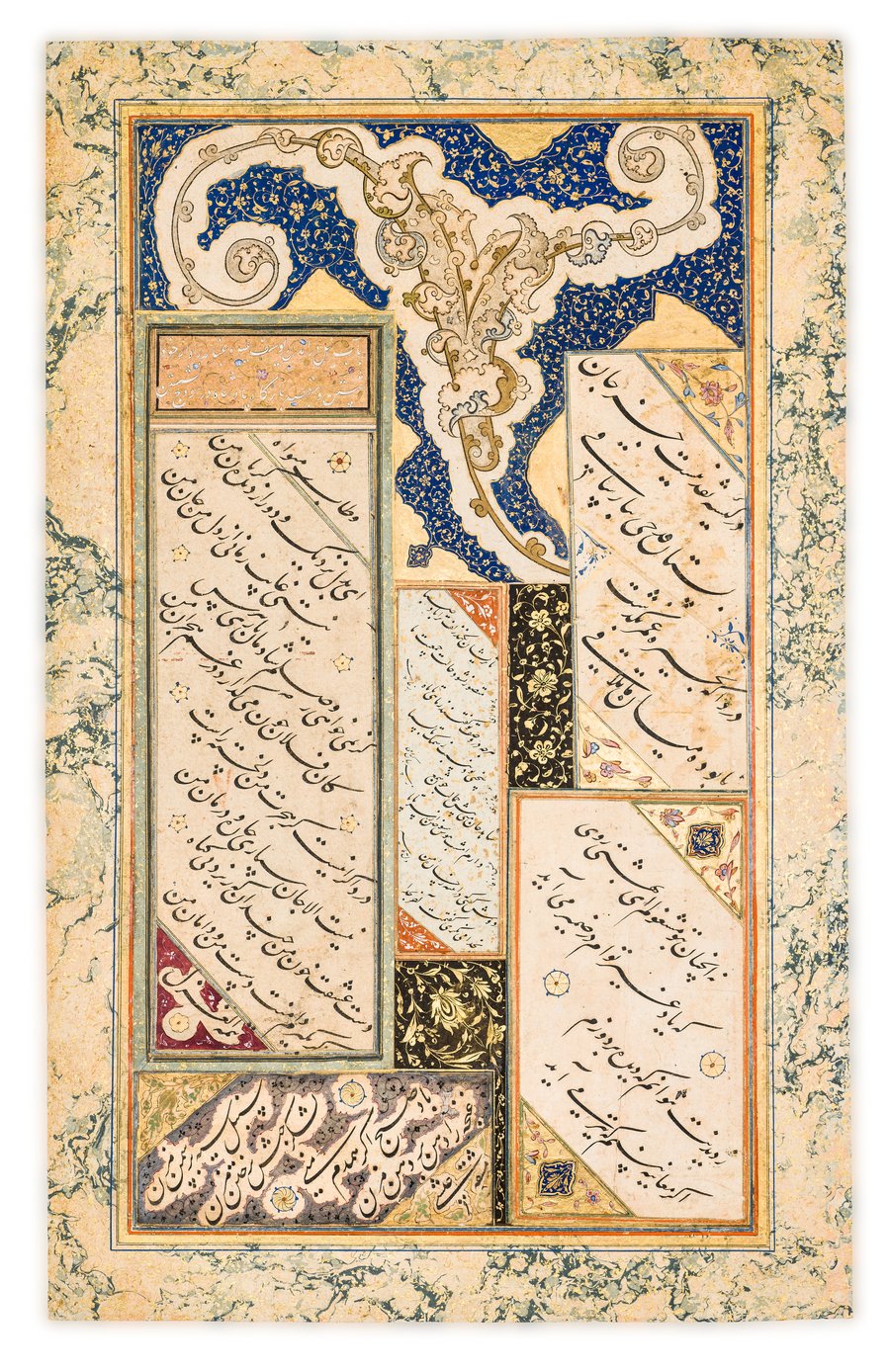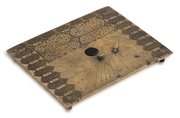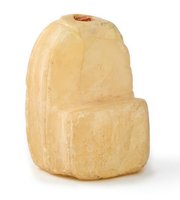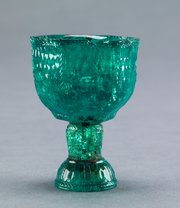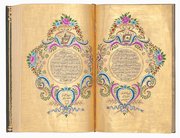
Illuminated album page with calligraphy
Museum of Islamic Art
- Title:
- Illuminated album page with calligraphy
- Calligrapher:
- Ayshi
- Production place:
- Iran
- Date:
- 1530 - 1560
- Period:
- Safavid
- Title:
- Illuminated album page with calligraphy
- Calligrapher:
- Ayshi
- Production place:
- Iran
- Date:
- 1530 - 1560
- Period:
- Safavid
- Material:
- Paper, Ink, Gouache, Gold
- Technique:
- Calligraphy, Illumination, Marbling, Painting
- Dimensions:
- 40 × 25
This folio, originally part of a now dispersed artistic album, dates to the first half of the 10th century AH / 16th century CE. It displays six different calligraphic blocks arranged to fill the page, resulting however into a coherent composition that feels spatially full yet visually balanced. Illuminated boxes separate the calligraphies, on the upper part an illuminated drawing of floral sprouts has been pasted; its treatment with light touches of colour reminds of early Timurid examples. A border of heavily gold-sprinkled marbled paper frames the page. The calligraphy is by ʿAyshi, a renown Safavid calligrapher said to be associated with either Shah Ismaʾil I or Ibrahim Mirza’s court in Mashhad.
During 9th century AH / 15th century CE a renewed interest in book culture prompted the development of new art forms in book shape developing across Iran and Central Asia. Among these stands the Persian album (muraqqa'), a composite artwork between two covers containing a vast array of artistic material (mostly paintings and calligraphy) from both contemporary artists and past masters, arranged according to specific criteria. While the Persian album will gain popularity and acquire its iconic appearance in 10th-century AH / 16th-century CE Safavid Iran, its roots delve deep into the artistic and cultural practices of the early Timurid workshops.
